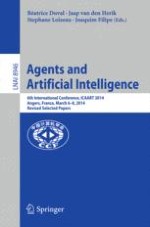2015 | OriginalPaper | Chapter
Behavior Clustering and Explicitation for the Study of Agents’ Credibility: Application to a Virtual Driver Simulation
Authors : Kévin Darty, Julien Saunier, Nicolas Sabouret
Published in: Agents and Artificial Intelligence
Publisher: Springer International Publishing
Activate our intelligent search to find suitable subject content or patents.
Select sections of text to find matching patents with Artificial Intelligence. powered by
Select sections of text to find additional relevant content using AI-assisted search. powered by
